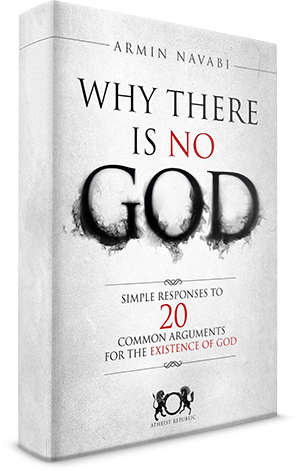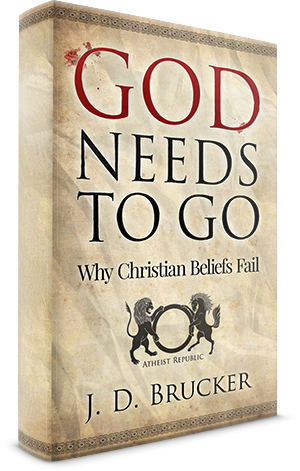
Oops, they went and did it again. Those silly scientists. They wanted to get a broader readership, and maybe get some extra research funding, by pandering to the religious. (Genetic Adam & Eve - Live Science)
This article has nothing whatsoever to do with “Adam and Eve.” But in order to attract readers, they use that headline. As a result, you can expect that there are going to be links or references to this research to support the contention that science has confirmed an Adam and Eve pair. It doesn’t matter that the article disabuses this idea. Most people won’t read beyond the headline before they move on to the newest cat video, the latest peccadillo of some overpaid celebrity, or a report on possible zombie attacks in rural Iowa.
Why do scientists and journalists who cover scientific issues do this? It happens all the time. Scientists can be their own worst enemies. I am reasonably confident that the authors of this article don’t support the “science” of intelligent design or creationism, and would probably be against their introduction into the public school curriculum. Yet they announce their new findings in such a way so as to give some credence to a wholly discredited religious account of the emergence of humans. Why do this?
It was the same thing with the Higgs boson. It was probably a back page item until someone wrote a book calling it the “God particle” (I couldn’t verify if that was the first use of the catch-phrase, but it was a major step in the popularization of the designation). Did this result in religious people taking the time to understand the Standard Model of particle physics in greater depth? I doubt it. Instead it created confusion, misunderstanding and yet another case of popular religious culture claiming scientific support for its own cause. But it probably helped sell the book, and the name struck despite numerous denouncements by established scientists. Religion is more popular for most people than science, especially the rather esoteric realm of particle physics.
But it’s not only physicists and biologists, although you’d would think they would have learned their lesson. In 1987, an article in Nature (“Mitochondrial DNA and Human Evolution” by Cann, Stoneking and Wilson) first published the findings supporting a mitochondrial progenitor who lived from 140 -200,000 years ago in Africa. The original article, to its credit, does not mention any Eve. But other authors now jumped on the bandwagon and tagged this distant ancestor with the moniker of “Eve” and the name stuck, and was taken up by the popular press. It was a great discovery on its own merits, and it should not have been tainted by an association with some mythic fairytale.
But it isn’t always a case of the media pushing the religious connotation of some wholly non-religious scientific discovery. Sometimes scientists bring it on themselves in order to gain a broader audience or gain economic support from the gullible faithful.
Into this latter category, I would put some of the reports on the flooding caused by the Black Sea making contact with the higher elevation Mediterranean Sea around 7,500 years ago. This may have affected early human communities living along the shores. Here was the evidence of a “great” deluge (however, no one knows how long it took the Black Sea level to raise) at least along what had been the coast of the Black Sea. Many press reports focused on whether this was the evidence for the Great Flood out of the Hebrew Torah. Never mind that this took place far away from the Levant, and there is no evidence that there was any impact whatsoever in the Fertile Crescent. Again, you have the risk of people reading the headlines and not getting to the real evidence.
Some people even made a living at this sort of misguided science. The great archaeologist Sir Charles Leonard Woolley in 1922 started excavating the site of ancient Ur in what is now Iraq. Ur was one of the early Sumerian city states, with habitation dating back to about 3,800 BC. Woolley’s excavations were spectacular, and in some ways I think they were more remarkable than those of the much better known Tutankhamen in Egypt, also discovered in 1922. Woolley discovered royal tombs dating to around 2,600 BC, one of which was a queen’s burial which included the ritual deaths and burials of other people who may have been her retainers (a likely instance of human sacrifice). Also, there were a lot of lovely gold items, which always seem to catch the popular imagination. All of this was wonderful stuff.
But in the press, Woolley intentionally linked his finds to the Hebrew Torah’s references to Ur, as the birthplace of Abraham, the mythical founder of the Hebrew people. Although the son of a clergyman, Woolley’s academic writing are not an exercise in religious apologetics. He is generally regarded as one of the pioneers in professional archaeology. He knew that the Ur he was excavating with the marvelous finds was more than a thousand years distant from the biblical (Genesis 11:26-28, 31 and 15:7; Nehemiah 9:7; and Acts 7:2-4) “Ur of the Chaldees” (referencing the Chaldeans, who didn’t occupy Ur until around 620 BC, when Nabopolassar founded the rather short-lived Chaldean Dynasty). But in his press reports, he frequently spoke of the Ur of Abraham in a direct appeal to those religious backers who might be more inclined to support his work if they felt it was somehow linked to proving some element of the Bible.
There is one very interesting thing to note here. The traditional “dating” of Abraham (who as far as anyone knows is a fictitious character, like Aeneid) by believers was back around 2,000 B.C. (to give lots of time for all the other mythical events to happen, before you get into some plausible historical references in the Hebrew Torah). But there were no Chaldeans anywhere in the area back then, although there was certainly an Ur (some biblical scholars dispute whether Abraham was actually from Woolley’s Ur–which is a rather silly argument as there is no evidence for a real Abraham in the first place). So the reference to an Ur of the Chaldeans links the composition or writing of the Hebrew Torah to the period in which the Chaldeans actually did rule Ur, thereby dating it to no earlier than 620 BC.
Now, an archeologist cannot skip layers of history to get down to the “good bits,” and Woolley did indeed excavate the strata of Ur that corresponded to the time of the Chaldeans rule. He even named one of his books “Ur of the Chaldees” which was published in 1938. But the press announcements and the beautiful items dug up from the royal tombs had nothing to do with that period of history.
Woolley also linked some flooding evidence he found to the Great Flood of the Hebrew Bible, speculating that the evidence of a flood that he found could have been the basis of the biblical story. But if people had read the actual full report, it was of a localized flood along the river valley. Again, media headlines blurred the underlying reality.
These are just a few examples. And I am not blaming the scientists, many of these links to popularly known religious myths are driven by journalists and the media in the face of explicit scientific disavowals and corrections. We have to be realistic. The average person in America or Europe may very well be prepared to read an article or book with some religion-related heading, whereas they might not read something with a less familiar but more accurately descriptive title. There may be more religious people willing to back projects and research if they think it’s going to vindicate their religious beliefs in some way, no matter how tangential. But by pandering to this element in society, we do a disservice to the truth.
None of my examples had anything to do with religion, with the possible exception of the flood evidence–which was postulated as the basis for the myth of the Hebrews (and other people who came far before the Hebrews in the region who also had flood myths, from whence the Hebrews probably derived their own myth). Woolley found no evidence in Ur for any Abraham. The headlines were all grasping at the straws of popular religious preoccupation in an effort to broaden their appeal. We need to stop this. Science is exciting and interesting in its own right. We don’t need to attempt to link it to any religious beliefs just to make it more interesting or appealing, and such unjustified linkage or emphasis just creates more confusion and misunderstanding.





























